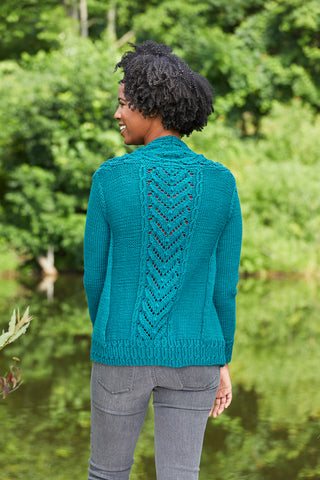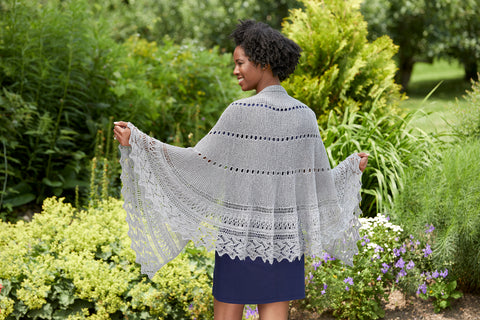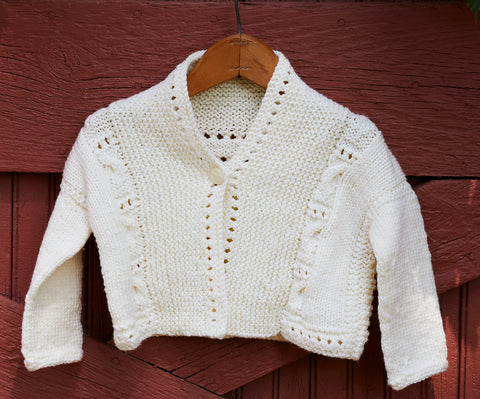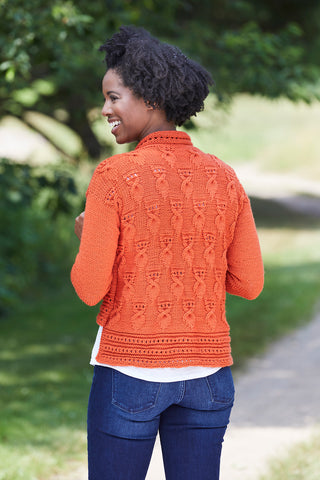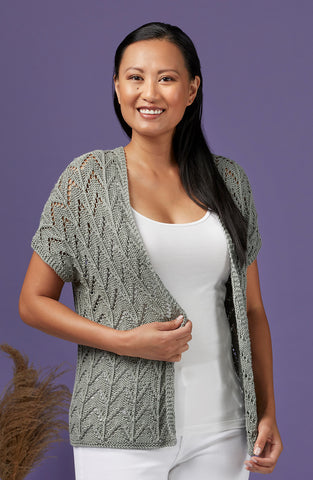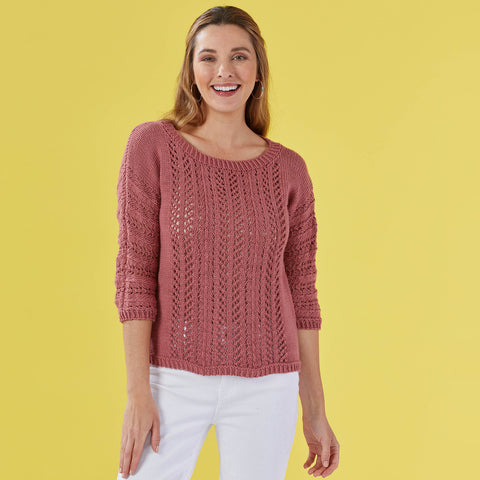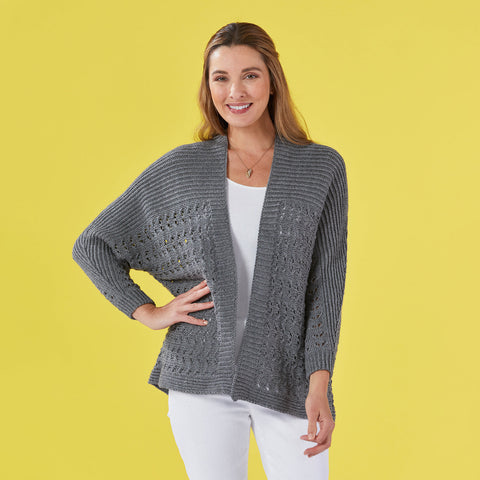One of the unexpected realities that happens when you write instructions for a living is the complete inability to follow someone else's instructions without attempting to alter or (truly) discard sections of them altogether. This extends far beyond the borders of knitting and crochet patterns too, I am definitely smarter than everyone at Ikea, Lego, and don't even get me started on the challenges of actually following recipes. Somehow despite knowing that I spend my time creating patterns to be followed step by step and the amount of work required in creating instructions... I just can't follow them without changing something. With a rebel yell I forge bravely into intricate projects haphazardly discarding information and substituting my own. And let me just say that this "smarter than the pattern" club can have disastrous consequences, like wavy borders, flipped up hems, socks for hobbits (don't ask) and the ever regrettable tunic sweater. Why regrettable? Well it was supposed to be a cropped cardigan and now it is a stretched out mess of a bathrobe. (actually if this has happened to you check out this post on absorbing length with Kitchener's stitch and you might be able to salvage it.)
I know that knitters of all sorts and not just designers can struggle with following every aspect of a pattern, what parts are really important? And what parts can be fudged a little bit? There are a few golden rules to follow for a successful project... but there are also aspects that have wiggle room.


Let's start with gauge, the Holy Grail of knitters everywhere. Truly do knit a gauge swatch, and block it as you intend to launder the finished garment, machine wash and dry that sucker if it is superwash. If you did the deed and your stitch count is dead on, perfect, but what if your row gauge is off by a few rows? this can still work depending on the type of project you are creating. If you are working a seamed sweater (not raglan, or circular yoke) and at some point the main body instructions and the sleeve instructions say "work until piece measures this long from cast on" then you can still use the yarn you swatched with. However if the pattern is for a garment knit sideways like the Radiant sweater you cannot use a yarn with a differing row gauge as the sizing on sideways knits depend on the row gauge not the stitch gauge. If your row gauge is off and you are working a raglan or circular yoke you run the risk of the yoke being too deep or shallow, if it is going to be too deep work less even rows between decreases and vice versa if it is going to be too shallow work more even rows between decreases.
What if your stitch gauge is off? Too small? Too big? If that is definitely the pattern you want to use, no exceptions, no substitutions, trust me we have all been there, then you can work a ratio to see if another written size of stitches combined with your size of length measurements would work out. First take the stitch count you have in 4 inches, divide it by 4 and write down exactly what it is without rounding it at all. That is your stitches per inch, multiply your unique stitches per inch number by the bust circumference number you want to achieve in the garment, (usually the intended recipients bust size plus 2-4 inches.) Now take that number and see if it is close to any of the bust circumference stitch counts present in the pattern after any shaping that may have taken place in the main body. This is the stitch count right before the armhole shaping. If there is a size that has a stitch count within 5 stitches for fingering -sport weight, 4 stitches for dk, 3 stitches for worsted and 1-2 stitches for anything larger you can use those stitch counts and the length measurements for your orignial size. I highly suggest going through the pattern and circling the stitch counts for the one size and the length measurements for the other size so as not to be tragically and hopelessly confused.
What if your stitch gauge is off? Too small? Too big? If that is definitely the pattern you want to use, no exceptions, no substitutions, trust me we have all been there, then you can work a ratio to see if another written size of stitches combined with your size of length measurements would work out. First take the stitch count you have in 4 inches, divide it by 4 and write down exactly what it is without rounding it at all. That is your stitches per inch, multiply your unique stitches per inch number by the bust circumference number you want to achieve in the garment, (usually the intended recipients bust size plus 2-4 inches.) Now take that number and see if it is close to any of the bust circumference stitch counts present in the pattern after any shaping that may have taken place in the main body. This is the stitch count right before the armhole shaping. If there is a size that has a stitch count within 5 stitches for fingering -sport weight, 4 stitches for dk, 3 stitches for worsted and 1-2 stitches for anything larger you can use those stitch counts and the length measurements for your orignial size. I highly suggest going through the pattern and circling the stitch counts for the one size and the length measurements for the other size so as not to be tragically and hopelessly confused.
What about those needle transitions? You know when the pattern instructs you to change needle size after working a border row, or work a decrease or increase row when transitioning to and from a border. Those are actually really important, don't skip them, no not even if you already worked it using the large needle and will have to rip it out, rip it out anyway, you will have a much nicer garment for doing it. Most of the edgings that we use in knitting to lie flat and create an uncurled edge are a different size than the stockinette mostly used for the main body of garments. Actually garter stitch, moss stitch and seed stitch can be as much as 10% wider than stockinette worked on the same size needles. So those needle transitions allow the different stitch patterns to all be the same width resulting in a better fitting garment.
Now to knitting in the round versus flat. I know that most knitters prefer to knit in the round, I am a knitter after all and stockinette in the round with a great movie is a pleasure not to be taken lightly. But there are some instances when you will want to be careful about arbitrarily changing a pattern to the round. To better understand why some patterns are written flat we need to understand seaming. One of the major benefits of seaming is stability, it gives the garment of looped yarn that is inherently stretchy something to hang off of that can help it hold its shape. For garments made out of slick fibers without much elasticity or fiber memory (read cotton, hemp, linen) that seaming helps them hold their shape and not stretch into oblivion. Even lovely springy wool needs a hand sometime, like at the neckline of a circular yoke or raglan yoke sweater. An entire garment is weighing on the neck area and a row of bound off stitches gives it stability to not grow and stretch down over the shoulders.
The other consideration to make if wanting to convert a pattern to the round is stitch gauge. Gauge on the exact same needles and yarn in the round is smaller than worked flat. I believe it has a lot to do with the lack of actually working the purl rows but if anyone truly knows and I am wrong please correct me. If you are changing a pattern to the round check your gauge with a swatch knit in the round, if you begin a hat flat, like Cloche Divine and then finish in the round you can expect the overall circumference to be somewhat narrower.
When can you truly ignore what a pattern says? What about color? Of course color is one of the very best things about ... well life in general, and about knitting as well. Change that color with a rebel yell! Do you find yourself picking patterns solely based on the sample color? I am so guilty of this, anything orange hits my cue almost instantly, try taking a picture and changing it to grayscale using your phone. Look at the details of the garment and try to see it in a different color. Looking for new ideas on how to choose colors for a garment? Check out this post on Color Theory for Knitters.
Another thing to ignore at least superficially is the fit of the sample in the picture, unless that model happens to be your twin sister (I am sure it could happen... some models are twins) there is no way that garment will fit you totally exactly and perfectly the same way it fits her/him. Check the schematic and check yourself, get out a measuring tape, measure yourself and measure your favorite sweater to see how the new measurements match the old ones.
If you are feeling extreme (it happens, I had 16 piercings at one point) you can also ignore and substitute cables, have a pattern with a cable panel up the middle and love the sweater but hate the cable? Find a new cable you love with the same stitch count and substitute it instead. Hate the 1x1 ribbing? Work garter, unless it has a fit application like the top of a sock or the brim of a tam you can mix and match edgings at a whim. Just remember to change needle size to avoid the wavy edge. Run rebel with your knitting while still making smart choices about the finished garment and use the wiggle room inherent in most of these elements to truly customize and enjoy your knitting expereince.




